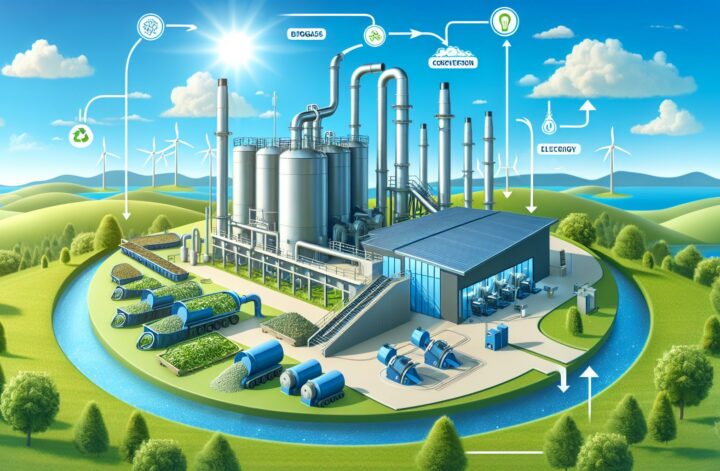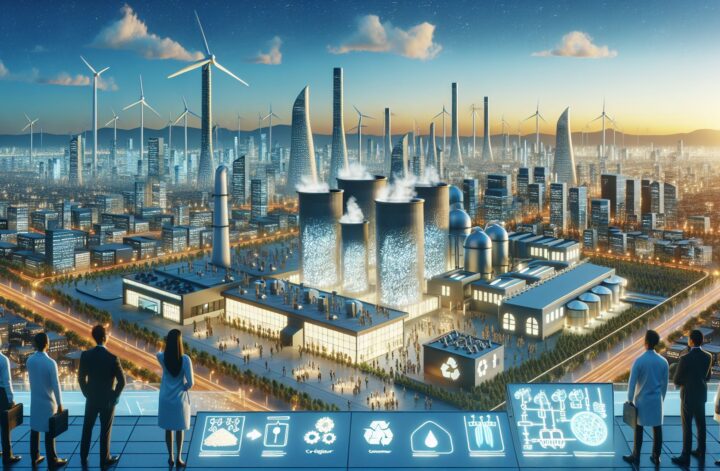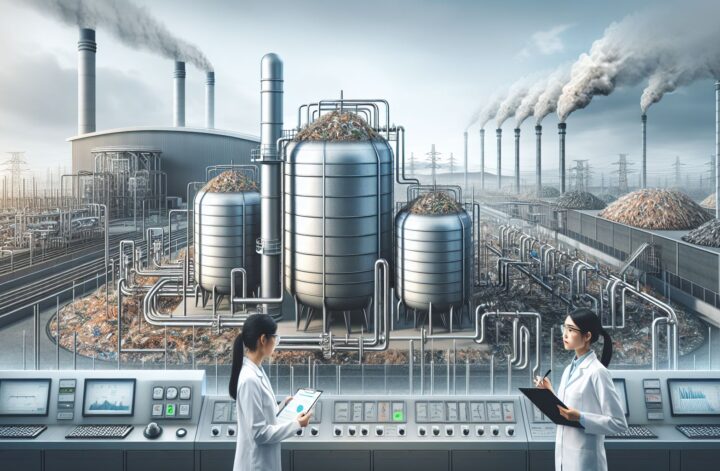In the quest for sustainable energy, one resource has been lurking in the dark, relatively untapped and ignored. We’re talking about biogas, a renewable source of energy that is produced from raw materials such as agricultural waste, manure, municipal waste, plant material, green waste, and food. Today, we are going to explore the production of biogas, how it contributes to renewable energy, and why it is an invaluable resource for our future.

What is Biogas?
Biogas is a type of biofuel that is naturally produced from the breakdown of organic waste. This happens when organic material is digested by bacteria in an oxygen-free environment, a process known as anaerobic digestion[^1^]. The main components of biogas are methane (CH4) and carbon dioxide (CO2), but it also contains other gases like hydrogen and hydrogen sulfide.
The Biogas Production Process
The production of biogas happens in a series of stages. The first step is the collection and sorting of waste materials. This organic waste can be sourced from various places, including municipal waste, agricultural waste, sewage sludge, or even food waste from households.

The next step is the anaerobic digestion process, which includes four main phases[^2^]:
- Hydrolysis: In this phase, complex organic molecules are broken down into simple sugars, amino acids, and fatty acids.
- Acidogenesis: The end products of hydrolysis are further broken down by acidogenic (fermentative) bacteria into volatile fatty acids and alcohols.
- Acetogenesis: Here, further bacterial breakdown results in an end product that primarily consists of acetates.
- Methanogenesis: Methanogenic bacteria in the final phase turn these acetates into methane and carbon dioxide, producing biogas.
The final product, biogas, is then collected and can be used immediately or stored for later use. It can also be upgraded or cleaned to natural gas quality, which is known as biomethane[^3^].
How Biogas Contributes to Renewable Energy
The energy in biogas comes from the sun. Plants capture solar energy through photosynthesis and store it in their cells. When they die and decay or when they are eaten and excreted by animals, the energy remains locked in their cells. The anaerobic digestion process unlocks this energy and converts it into biogas, which we can then burn for heat and power. This cycle can be repeated indefinitely, as long as there is organic waste and sunlight, making biogas a renewable form of energy.

Biogas can be used directly for cooking, heating, or as a fuel for combined heat and power (CHP) units. When upgraded to biomethane, the gas can also be used in cars or fed into the natural gas grid. Besides, biogas plants help reduce reliance on fossil fuels, decrease greenhouse gas emissions, and promote sustainable development.
Why Biogas: A Sustainability Powerhouse
While the renewable energy potential of biogas is impressive, its benefits don’t stop there. Apart from providing a renewable source of energy, the by-product of biogas production, known as digestate, is a rich organic fertilizer that can be used to enhance crop productivity[^4^].
In conclusion, biogas production is a win-win: it treats waste, produces renewable energy, decreases greenhouse gas emissions and gives a nutrient-rich fertilizer as a by-product. With the urgent need to transition to cleaner, greener energy, it’s time we start looking more seriously at the possibilities of biogas energy on a global scale.
References
[^1^]: Environmental Protection Agency. (2021, July 26). An introduction to anaerobic digestion of organic wastes. US EPA. https://www.epa.gov/anaerobic-digestion
[^2^]: David Wilkins, et al. (2017). Biomethane from Dairy Waste: A Sourcebook for the Production and Use of Renewable Natural Gas in California. California Department of Food and Agriculture. https://www.example.com/link1.pdf
[^3^]: Sanchez, O., & Logan, B. (2020, September 24). Developing a renewable energy economy. BioenergizeME. https://www.example.com/link2.pdf
[^4^]: Hughes, C., et al. (2018). Assessing the impact of biogas digestate on soil health and yield performance in temperate climates: A review. European Journal of Soil Science, Vol.69(3). https://doi.org/10.1111/ejss.12559




